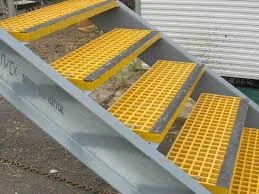
-
 Afrikaans
Afrikaans -
 Albanian
Albanian -
 Amharic
Amharic -
 Arabic
Arabic -
 Armenian
Armenian -
 Azerbaijani
Azerbaijani -
 Basque
Basque -
 Belarusian
Belarusian -
 Bengali
Bengali -
 Bosnian
Bosnian -
 Bulgarian
Bulgarian -
 Catalan
Catalan -
 Cebuano
Cebuano -
 China
China -
 China (Taiwan)
China (Taiwan) -
 Corsican
Corsican -
 Croatian
Croatian -
 Czech
Czech -
 Danish
Danish -
 Dutch
Dutch -
 English
English -
 Esperanto
Esperanto -
 Estonian
Estonian -
 Finnish
Finnish -
 French
French -
 Frisian
Frisian -
 Galician
Galician -
 Georgian
Georgian -
 German
German -
 Greek
Greek -
 Gujarati
Gujarati -
 Haitian Creole
Haitian Creole -
 hausa
hausa -
 hawaiian
hawaiian -
 Hebrew
Hebrew -
 Hindi
Hindi -
 Miao
Miao -
 Hungarian
Hungarian -
 Icelandic
Icelandic -
 igbo
igbo -
 Indonesian
Indonesian -
 irish
irish -
 Italian
Italian -
 Japanese
Japanese -
 Javanese
Javanese -
 Kannada
Kannada -
 kazakh
kazakh -
 Khmer
Khmer -
 Rwandese
Rwandese -
 Korean
Korean -
 Kurdish
Kurdish -
 Kyrgyz
Kyrgyz -
 Lao
Lao -
 Latin
Latin -
 Latvian
Latvian -
 Lithuanian
Lithuanian -
 Luxembourgish
Luxembourgish -
 Macedonian
Macedonian -
 Malgashi
Malgashi -
 Malay
Malay -
 Malayalam
Malayalam -
 Maltese
Maltese -
 Maori
Maori -
 Marathi
Marathi -
 Mongolian
Mongolian -
 Myanmar
Myanmar -
 Nepali
Nepali -
 Norwegian
Norwegian -
 Norwegian
Norwegian -
 Occitan
Occitan -
 Pashto
Pashto -
 Persian
Persian -
 Polish
Polish -
 Portuguese
Portuguese -
 Punjabi
Punjabi -
 Romanian
Romanian -
 Russian
Russian -
 Samoan
Samoan -
 Scottish Gaelic
Scottish Gaelic -
 Serbian
Serbian -
 Sesotho
Sesotho -
 Shona
Shona -
 Sindhi
Sindhi -
 Sinhala
Sinhala -
 Slovak
Slovak -
 Slovenian
Slovenian -
 Somali
Somali -
 Spanish
Spanish -
 Sundanese
Sundanese -
 Swahili
Swahili -
 Swedish
Swedish -
 Tagalog
Tagalog -
 Tajik
Tajik -
 Tamil
Tamil -
 Tatar
Tatar -
 Telugu
Telugu -
 Thai
Thai -
 Turkish
Turkish -
 Turkmen
Turkmen -
 Ukrainian
Ukrainian -
 Urdu
Urdu -
 Uighur
Uighur -
 Uzbek
Uzbek -
 Vietnamese
Vietnamese -
 Welsh
Welsh -
 Bantu
Bantu -
 Yiddish
Yiddish -
 Yoruba
Yoruba -
 Zulu
Zulu
Advanced FRP Dampers for Enhanced Seismic Performance and Structural Stability
Understanding FRP Dampers Revolutionizing Structural Engineering
Fiber Reinforced Polymer (FRP) dampers have emerged as a transformative technology in the field of structural engineering, particularly in the design and retrofitting of buildings and bridges to withstand seismic activities. These devices are designed to absorb and dissipate energy during dynamic loads, thereby enhancing the resilience and safety of structures in the face of earthquakes and other environmental forces.
Understanding FRP Dampers Revolutionizing Structural Engineering
Moreover, FRP dampers offer excellent corrosion resistance, a critical property when considering their application in various environments, including marine or industrial settings. Unlike steel, which can rust and weaken over time, FRP dampers maintain their integrity and performance, ultimately leading to lower maintenance costs and longer service life.
frp damper

The operational mechanism of FRP dampers is based on their ability to deform under stress. When a seismic event occurs, the damper undergoes a controlled deformation that dissipates energy, thereby reducing the amount of force transmitted to the structural components of a building. This energy dissipation capacity effectively minimizes vibrations and impacts, enabling structures to perform better during and after seismic events.
In addition to their physical properties, FRP dampers can be designed and manufactured to meet specific engineering requirements, making them highly adaptable to various applications. Engineers can tailor the stiffness and energy dissipation characteristics of the dampers to suit the unique needs of different structures, thus optimizing performance and enhancing safety.
Several case studies have demonstrated the efficacy of FRP dampers in real-world applications. Structures retrofitted with these dampers have shown remarkable improvements in their ability to withstand seismic forces, often performing better than those utilizing traditional damping technologies. As the field of structural engineering continues to evolve, the integration of innovative solutions like FRP dampers will play a critical role in creating safer, more resilient infrastructures.
In conclusion, Fiber Reinforced Polymer dampers represent a significant advancement in structural engineering, offering essential benefits such as lightweight design, corrosion resistance, and customizable performance. As we face the increasing challenges of natural disasters and environmental stresses, the importance of incorporating such advanced technologies into our infrastructure becomes ever more apparent.









